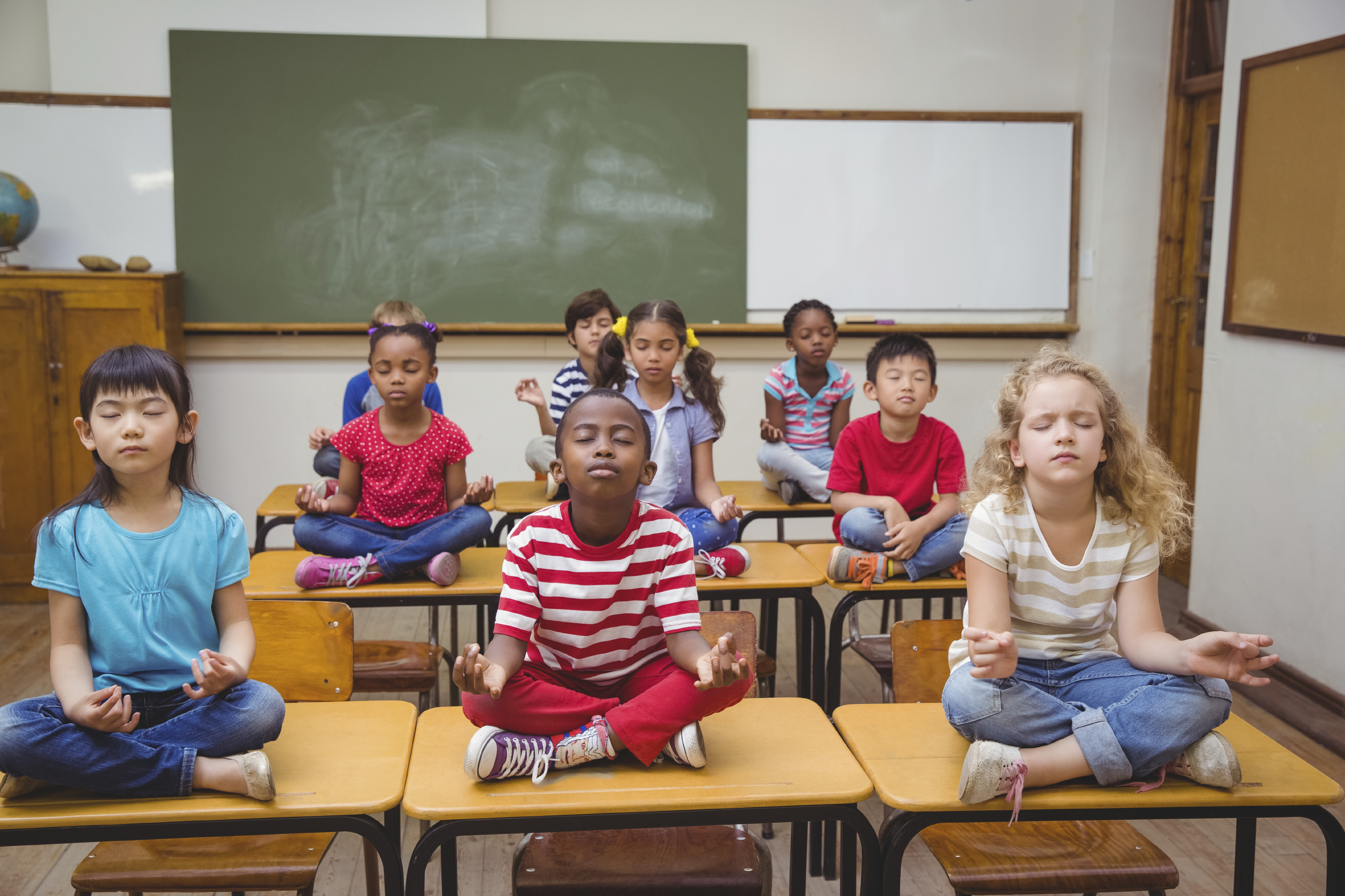 “My students have LOVED Yoga classes this year. They are very motivated to hold poses and focus their breathing on calming themselves.” Maghen Girard, vice principal and elementary educator shares the following lesson that helps children connect breathing, practiced through yoga poses, to physical and emotional benefits[1]. This lesson plan uses a child-friendly illustrated book of yoga poses but it could also be paired with another Heart-Mind Online resource, Yoga in the Classroom for a more formal routine using mats.
“My students have LOVED Yoga classes this year. They are very motivated to hold poses and focus their breathing on calming themselves.” Maghen Girard, vice principal and elementary educator shares the following lesson that helps children connect breathing, practiced through yoga poses, to physical and emotional benefits[1]. This lesson plan uses a child-friendly illustrated book of yoga poses but it could also be paired with another Heart-Mind Online resource, Yoga in the Classroom for a more formal routine using mats.
Learning Outcomes:
Students will be able to:
-
identify what happens to their body when stressed or anxious (physically and emotionally)
-
practice deep breathing techniques (using yoga poses)
-
recognize how and when deep breathing can be used to calm the body and mind

Materials Required:
-
Book or Poster: The ABCs of Yoga for Kids by Teresa Ann Power
Teaching and Learning Activities:
-
ACTIVATE THINKING: As a class, brainstorm the following:
-
What is stress?
-
How does it affect us?
-
What happens to our body when stressed?
-
What sorts of things cause us stress?
-
-
Have students focus on and identify the physical and emotional signs of stress (e.g. short breaths, increased body temperature, tense, negative thoughts, worry).
-
Ask students for suggestions as to what can create calm for our bodies? Then ask what we ALL can do anywhere at any time (e.g. deep breathing).
-
MODELLING & APPLICATION: Ask for someone to model "stressed breathing" (short, rapid, hard breaths) then ask a student to model "calm breathing" or belly breathing (long inhale, pause, long exhale). Have all students practice deep breathing.
-
Explain that the class will be using different classroom-friendly yoga poses (standing, sitting and balancing) to practice calming routines and deep breathing. Do various samples from the book (choose 6 -10 poses).
-
CLOSING: Ask how students felt while practicing these yoga poses and deep breathing? Ask why they think deep breaths help us calm (slows blood flow, slows heart rate, slows brain synapses, allows us to focus on one thing[2])
-
EXTENDING: Incorporate some “deep breathing” moments into subsequent parts of the students day and/or week to reinforce the concepts, self-awareness and skills learned in this lesson
Adaptations:
- Physical Adaptations - Students can sit in chairs and do this (if needed) just select appropriate poses from the ABC yoga book
- Visual - model all yoga poses first (or show the book pages using the document camera)
- Use calm counting cues as strategies for deep breathing and yoga pose holds
Follow-up Activities:
- Work some deep breathing activities and yoga poses into "busy" parts of your day to help calm students.
- Prompt and practice deep breathing strategies (not necessarily yoga poses) in different environments.
- Ask students to share opportunities when they have used these skills and what the results were.
- Use often to help make this the "norm" in your class
(lesson plan download, coming soon)
In a randomized control trial, a 12-week yoga-inspired mindfulness program was introduced to 4th and 5th graders. Emotion-regulatory outcomes such as symptoms of depression, postive and negative emotions and stress were measured.
Findings highlight that stress levels were reduced in both male and females. Of significance, youth that reported low or medium levels of baseline depression benefited the most.
In a study looking at the interactions between the the mind and physical health, researchers describe deep breathing as influential on the nervous system and autonomic stress response. Related benefits include an increase in both antioxidant and melatonin levels and a decrease in cortisol (the stress hormone).